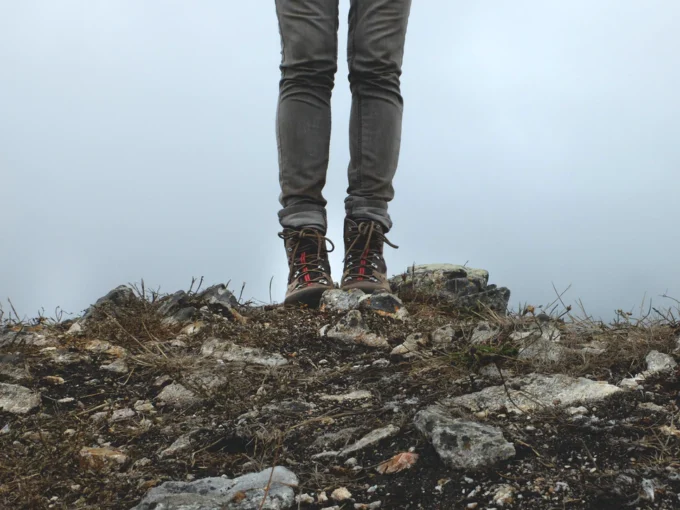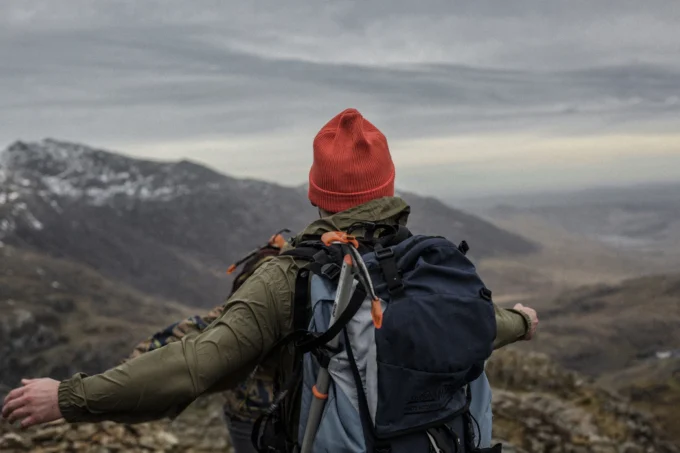Hiking is an excellent way to get you sweating while reveling in the beauty of the outdoors. You get to experience nature, which is one of the proven ways to enhance one’s mood. Besides, this activity also challenges both your physical and mental aspects due to its high intensity.
Unfortunately, hiking, particularly the lengthy and more intense types, can lead to minor injuries on several parts of your body, especially the knees. If you’ve had this experience before, you should know how knee pain can turn a good memory into a bad one.
On the bright side—hiking doesn’t necessarily have to be painful. With the right gimmicks and equipment, you can hike on any trail without suffering any kind of pain, much less knee pain.
On that note, below are seven tips to help you prevent knee pain from ruining your hiking trips:
1. Wear Proper Hiking Shoes
Improper footwear is one of the many contributing factors of knee pain during hiking. It’s also responsible for pain in other parts of the body, such as your lower back, ankles, and hips. In other words, your hiking shoes have a lot to do with why you often suffer from knee pain. If you want to experience a pain-free hiking trip, you can start by evaluating your hiking shoes.
According to Footsure Podiatry, the right pair of hiking shoes should be able to improve your stability and traction, and cushion your every step. By doing so, your knee joints will sustain a much lower amount of impact and pressure. Hiking shoes should have thick soles and are made of sturdy yet flexible materials in order to provide proper support for your ankles.
Also, make sure to wear shoes that fit well. Not wearing the proper size can do more damage to your feet than walking around barefoot. If you’re looking for a snugger fit, try gel inserts.
If you’re struggling to choose the right hiking shoes by yourself, you can consult an expert podiatrist. They should be able to suggest the right pair for your needs.
2. Stretch Exercises Before And After Trekking
Stretching before trekking can make your muscles more flexible and pliable; thus, it helps minimize the risk for injury. Examples of stretches you can perform before you start hiking include:
- Calf stretch
- Hamstring stretch
- Wrist stretch
- Standing quad stretch
- Shoulder rolls
Now, after the trekking trip, your muscles are contracted due to too much exertion. As a result, tight muscles will continue to put pressure on your knees. Therefore, it’s important to do gentle stretches after trekking in order to get those muscles back to their normal length. Stretches after hiking include rag doll pose, sanding saddle stretch, runner’s lunge, and ankle stretches.
3. Use Trekking Poles

Source: rei.com
A trekking pole is a standard hiking accessory that assists hikers by providing extra stability during a trip. It looks like a stick with a grip at one end and a pointy tip at the other. It’s a handy accessory if you plan on descending a particularly steep or rough trail.
So, how can a trekking pole help prevent knee pain while hiking?
Well, for one, trekking poles are known to improve the stability of hikers during descent. With greater stability, hikers are able to maintain their posture and form.
Moreover, a trekking pole can distribute the pressure on different parts of your body, such as your hips, back, arms, and knees. This would mean your knees would no longer have to shoulder all the strain your muscles accumulate while hiking. In fact, a study showed that trekking poles could help reduce the stress and pressure put on your knee joints by up to 12-25%.
Some trekking poles may come with specialty shock absorbers, which are pretty helpful in further reducing the force sustained by the body for every step you take.
4. Wear Knee Braces
Knee braces are another type of accessory that you can wear while hiking to prevent knee pain.
These accessories work by shifting your weight off your knees, thereby reducing the chances of sustaining knee injuries. They also come in handy when you’re currently suffering from a specific knee problem as they can protect your exposed kneecaps from any damages.
Knee braces come in many shapes and sizes, each for different needs and purposes. In your case, the open patella knee braces should be the best type as it provides support while allowing you to walk comfortably without compressing your knee caps or knee joints.
5. Learn How To Hike Properly
Contrary to common belief, hiking isn’t as simple as moving from point A to point B. There are other steps involved in the process, and skipping a few steps is what often leads to a painful hiking experience. For example, when you’re hiking uphill, you should follow these tips:
- Take shortened steps.
- Don’t lean too much forward or backward. Doing so typically disrupts your balance and increases the pressure on your knees. Simply position your hips under your torso.
- Avoid stepping on your toe. Instead, step flat-footed as much as possible.
Similarly, there’s a strategy when descending or hiking downhill. It involves cushioning the impact of your every step while boosting your stability. You can do this by following these tips: - Make use of trekking poles.
- Do side steps whenever you struggle to maintain stability or balance.
- Make sure your toes don’t hit the ground first with every step. This often results in lower surface grip, which increases the chances of slipping.
- Avoid walking too slow or too fast. Match your pace with the steepness of the trail.
- Slightly lean backward to bolster balance and stability when descending.
6. Adjust Your Diet
As always, adopting a healthy diet can help prevent knee pain while hiking. Of course, you’re not just looking at any type of healthy food. If you want to minimize your risks of knee pain, focus on eating foods that contain omega-3 fatty acids. This nutrient is quite handy as it helps lubricate your joints, hence minimizing the friction caused when joints grind against each other.
As a result, you’re less likely to suffer from knee pain while hiking or during any other activity, for that matter. Alas, these fatty acids aren’t naturally produced in the body, so you have to add them to your diet. Below are a few examples of foods that contain omega-3 fatty acids:
- Walnuts
- Flaxseeds
- Egg yolks
- Chia seeds
- Olive oils
You can choose to include these in your meals, but they’re also foods that you can snack on during your hike.
7. Lose Weight
Most hikers don’t carry too much during their trips since walking with extra luggage often puts more pressure on the body. The rule of thumb is that the more weight you’re carrying, the more likely you are to suffer from knee pain. For that reason, losing weight is yet another way of preventing knee pain since it essentially reduces your overall weight.
For that reason, consider taking steps to lose weight, especially if you plan on hiking on a rather adventurous trail. You can also lighten your load if you plan on hiking all day long.
Conclusion
Hiking is one of the few ways to explore the world’s beauty firsthand while keeping yourself physically active. While hiking is notorious for being quite taxing to your body, especially your knee joints, it’s possible to escape the dreaded knee injuries that come with the activity by following the above tips, allowing you to have a pleasant and satisfying walk with nature.










